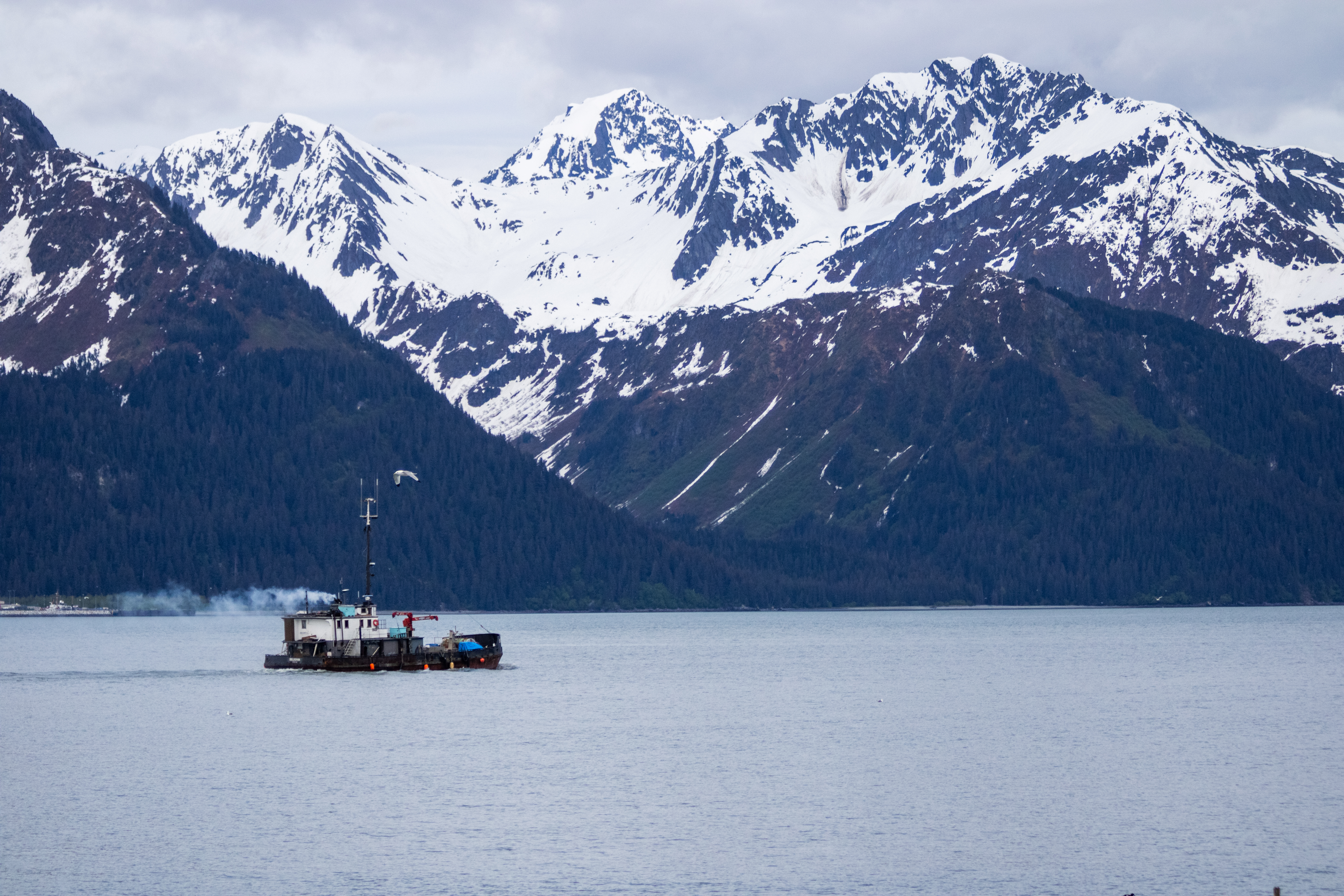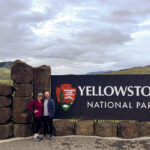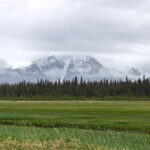
Denali National Park Overview
Denali National Park and Preserve is Alaska’s first national park. Founded in 1917, the park encompasses over 7,000 square miles; that’s about the size of the state of New Jersey! The park is named for the tallest mountain peak in North America, Denali. This impressive mountain measures in at an 20,310 feet, and if you’re lucky, can be seen from multiple vantage points throughout the park.
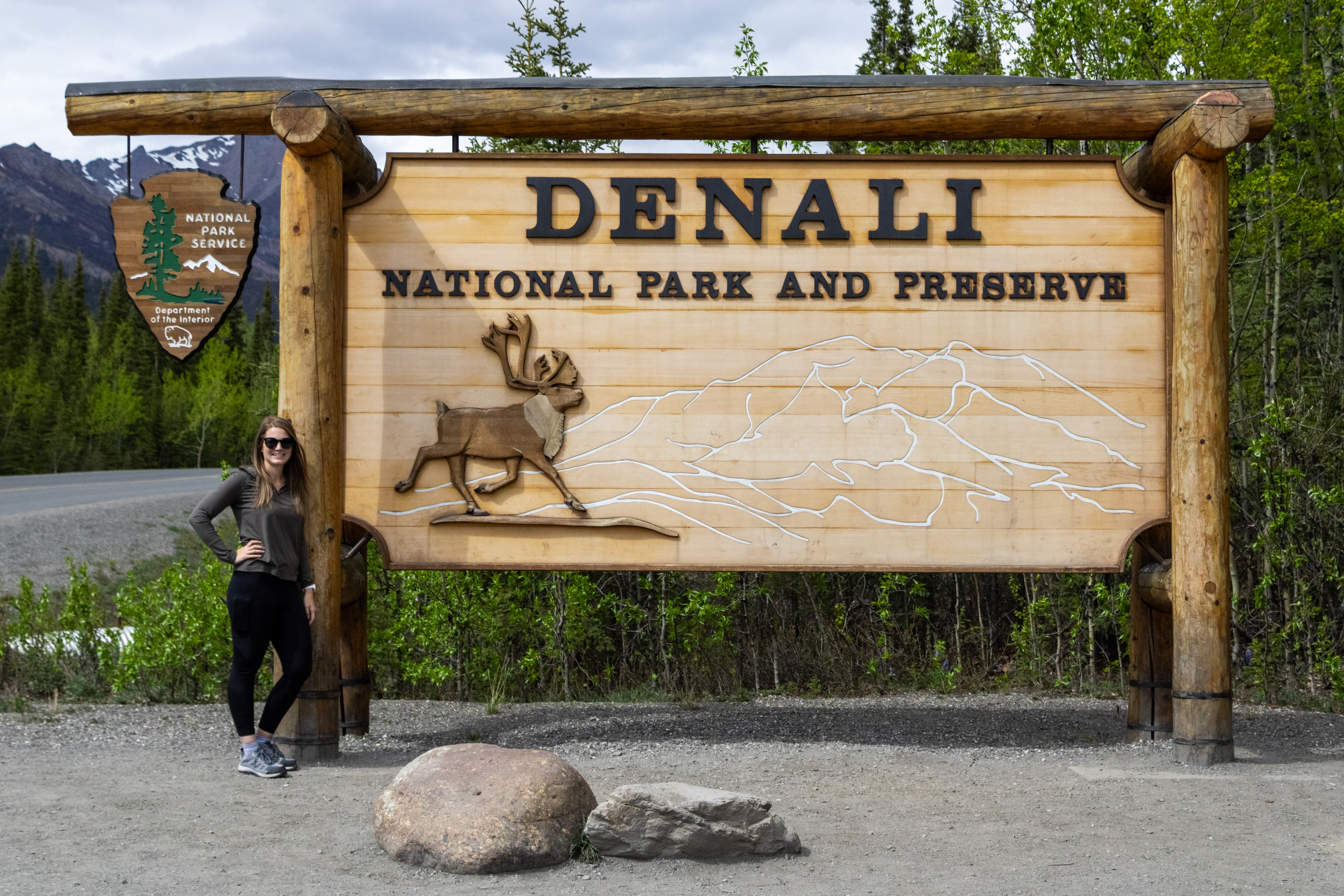

It is estimated that only 30% of people who visit Denali National Park will get to catch a glimpse of the peak. The impressive 20,310-foot tall mountain is so immense that it creates its own weather system, and is covered in clouds 70% of the time. We were very fortunate to see Denali not once, not twice, but on three separate occasions!
I could go on and on about the countless facts and figures of the park, but just know, it should be on everyone’s bucket list. The entrance fee to the park is $15 per person, or if you have the annual pass, that is waived. Without further ado, let’s dive into all there is to know about Denali National Park and Preserve!
Getting There

Situated between two main hubs, Denali National Park is easily accessible by road. The main entrance is 237 miles north of Anchorage, and 120 miles south of Fairbanks. So no matter where you fly into, you can easily be at the park within a few hour’s drive. There are also small airstrips in Healy, Cantwell, and Summit, small towns within a few miles of the park entrance.
Another very convenient transportation option is the Alaska Railroad system. The train offers daily service to the park from both Anchorage and Fairbanks. While we wanted to take the train, we needed the flexibility of having our own transportation. It is something we will be doing on our next visit though! For more information on the train schedules and cost, visit The Alaska Railroad website here.
When to Visit
Peak season for Denali National Park is from mid-June through mid-August, so if you’re traveling at these times, expect more crowds. We chose to visit just before their peak season started. We were happy that there weren’t too many people visiting yet. While the park is open year-round, the services offered in the park are much more limited in the winter months. The Park Road stays open year-round to mile 3.4. If you’re more adventurous, they say Denali in the winter months is magical!

Weather can change drastically from day to day, and even hour to hour. Be prepared for temperatures that can range from 35 to 75 degrees Fahrenheit, and precipitation to vary. We got lucky during our trip and had gorgeous, 60-degree weather and sunny skies.
Transportation within the Park
Unlike some other National Parks, most of the buses in the park are not free. There is one type of bus that is free, and that is the Riley Creek and Savage River Shuttle Loops. These will only take you as far as the Savage River Campground, which is at mile 13 on the park road. I highly recommend you purchase tickets in advance for one of the other bus options so that you can see more of the park!
Private vehicles are allowed within the park, but only up until mile 15 on Park Road. After this point, you must be either walking or on one of the buses.
Camping
If you’re looking to stay within the park boundaries, camping is going to be your only option. There are no lodges or formal accommodations within Denali National Park, but they do have several campgrounds throughout. Denali has 6 campgrounds spaced throughout the park, however, currently only 5 are accessible due to the Pretty Rocks Landslide which closed the park road past mile 43 in 2021.

Between the other 5 campgrounds, you should have plenty of options! Each one is unique, some only allow tent camping, while others have both tent camping and RV camping. For more information on camping within Denali National Park and Preserve, read my full blog post about it here!
Camping not your thing? Don’t fret! There are plenty of hotels and resorts just outside the park entrance. These range from small motels to fancy resorts with all the bells and whistles. Many of the resorts offer transportation buses into the park for ease of access.
Wildlife
Thirty-nine species of mammals, 169 species of birds, 14 species of fish, and one species of amphibian call the park home. We were amazed by all the wildlife we were lucky enough to witness. There is a Denali “Big 5”, consisting of grizzly bears, moose, Dall’s sheep, wolves, and caribou. Unfortunately, we did not get to see all 5 of the Big 5, but we did get to see 4, and I say that’s pretty good odds! The only one we were missing was seeing a wolf. Be sure to keep your eyes peeled, all of the animals are very good at camouflaging!
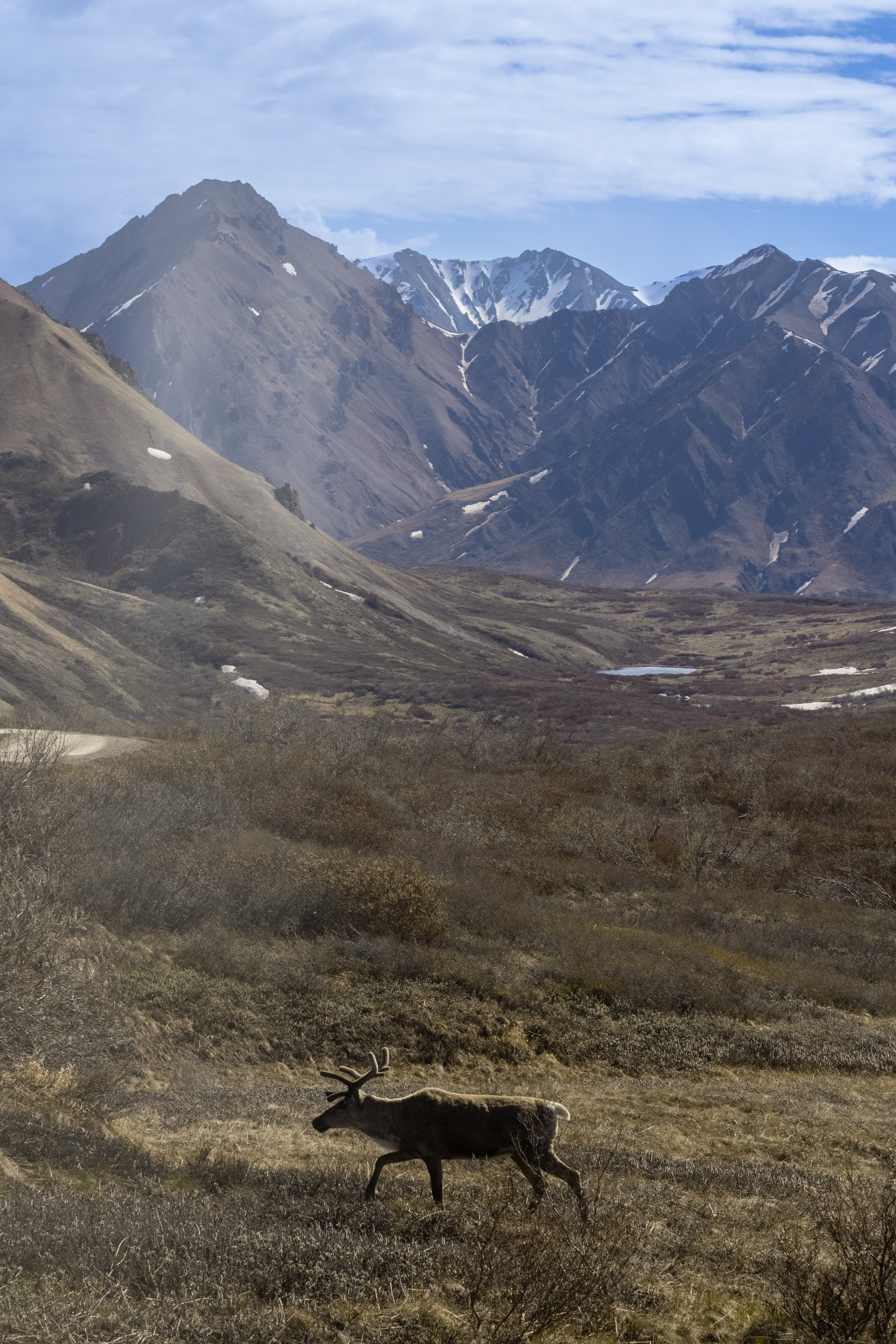
Activities and Tours
Tour and Transit Buses
There are 4 types of buses that go through Denali National Park – 2 narrated tour buses, and 2 non-narrated transit buses.
Tundra Wilderness Tour
The Tundra Wilderness Tour Bus is the most in-depth tour option the park offers. It is a 5 to 5.5-hour bus ride through the park up to the Pretty Rocks Landslide, with multiple stops along the way. The tour is narrated by a certified naturalist. This was not the tour option we opted for, but I’ve heard great things! If you are part of a cruise tour package, I believe this is typically included in your package. The cost per person for this tour as of 2024 is $144 for adults and $64.50 for children 15 and younger.
Natural History Tour
Another narrated tour option is the Natural History Tour. This bus tour option focuses on the cultural history of Denali National Park and will take you up to mile marker 17 of the park. Despite the shorter distance, the tour length is still listed as 4.5-5 hours, which includes multiple interpretive stops. This tour is also narrated by a certified naturalist. For this tour, the cost as of 2024 is $116.25 for adults and $50.75 for children under the age of 15.
East Fork Transit Bus

The final two bus options through the park are the non-narrated East Fork Transit bus or the camper bus. Both buses will take you up to the furthest point in the park you can currently travel, which is mile marker 43. While they are advertised as non-narrated, and the drivers have no obligation to narrate, the bus driver we had was extremely knowledgeable about the park. She shared much of her knowledge with us, she happily stopped any time we spotted wildlife, and made a few stops when we were lucky enough to glimpse Denali in the distance.
The transit buses are a hop-on, hop-off scenario. Meaning anywhere along the park road that you want to stop to hike through the backcountry, they will pull over and let you out (pending that the area is not currently closed). We chose this option because of the flexibility it offered, and we weren’t tied to one bus for the entirety of our day. That, and it was more budget-friendly. The cost for both transit buses is $33.25 per adult, and free for children under 15.
Camper Bus
The camper buses go the same distance as the East Fork Transit bus, however, you must have a special ticket for these buses that show you have a campground reservation at one of the more remote campgrounds further into the park.
Sled Dog Kennels and Demonstration

Did you know that Denali National Park and Preserve is the only National Park with a working sled dog team? And you can meet them! This was a super cool thing that I highly recommend you don’t miss! There are multiple demonstrations throughout the day, be sure to stop by the visitor’s center to find out the schedule. A dedicated bus will take you up to the sled dog kennels from the visitor’s center. You will get to spend time petting and interacting with the many dogs they have there, followed by a 30-minute presentation and demonstration of the dogs running. The dog kennels are open daily so you can also just go and tour them on your own during their operating hours.
Hiking and Guided Hikes
Denali was different than any other National Park I’ve been to (so far!) in that there are not too many maintained trails. In other parks, there are strict rules about staying on the trails and boardwalks, and not venture off into the backcountry without special permits. They have these rules to protect both the wildlife and fauna in the park, as well as the visitors. But in Denali, you can hike anywhere you want! So long as it is not in a restricted area of the park. In fact, they discourage you from walking on any trails that may be forming in the backcountry, so that trails don’t form.
There are a handful of maintained trails in the park, all within the first 15 miles. They range in length and difficulty. You can read more about hiking in Denali National Park in my full guide here!

Guided hikes are another hiking option in Denali. They have multiple options throughout the day, ranging in time and distance. This is a unique opportunity to go hiking with one of Denali’s finest Park Rangers and delve deep into the park. More information on guided hikes can be found at the Visitor Center.
Outside the Park

You will not be lacking for activities within the park, but if you are looking for some other adventures, there are many tour operators just outside the park that will take you on epic trips! We did a white water rafting trip down the Nenana River (read about that here!), which runs along the park boundaries. Other options we looked at were zip lining, an ATV tour, or a flightseeing tour of Denali. There is a plethora of things to do both within and outside the park to keep you busy for several days!
Final Thoughts
The more National Parks I visit, the harder I am finding it to pick a favorite. All of them are so unique and wonderful in different ways. But, Denali National Park and Preserve is definitely at the top of my current rankings. I may be a bit biased being that we got to join the 30% club, but even if we hadn’t gotten to witness the immensity of Denali, I still would have been blown away. With teeming wildlife, gorgeous mountain views, wandering hikes, and sled dogs, Denali National Park has something for everyone!
Have you been to Denali National Park? What did you think of it? Let me know in the comments below!

